Geek alert. Although the mentality stems from the last century, the megapixel wars are not over. It is, however, safe to say that those of us familiar with our cameras have started to realize that they are much more than megapixels + dynamic range. There are other factors that we have come to admit are important to consider – case in point, the sensor. Some are noisy, some are big, some are juicy, others are…well… you get my point. These apparent truths prompted a conversation with my friend Sohail and led him to this in-depth post about the comparison of digital sensors and processing systems that go into today’s cameras — all with the emulsion (the photo sensitive side of film) discussion that used to kick around in the era of film. It’s all coming full circle now… Take it away Sohail. -Chase
A few months ago, I made a switch in camera platforms. Comparing images taken with a 5D Mark III and a Nikon D800, I found that there was something about the Nikon image that I really liked, something that went beyond the standard things that can be quantified, like its 36MP resolution, or its 12 stops of dynamic range.
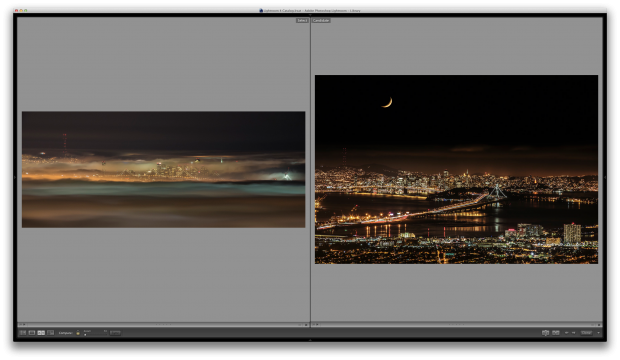
D800 shot on the left, 5D Mark III on the right. Fog-shrouded Bay Area, treated in Color Efex Pro 4. © Sohail Mamdani
The atmospheric conditions for the two shots were different, but even accounting for that, the 5D Mark III image was uncomfortably crunchy, with some pretty serious color noise and banding in the shadows. The D800 shot, on the other hand, had amazing tonality, and the noise was mostly luminance noise, smoothly rendered, almost organic, like film grain.
I’d love to tell you that this was a moment of epiphany. It would be great if I could say something like, “And at that moment, it was as though the heavens themselves had opened up and poured the sweet song of angels down upon my ears and I realized I had found the camera I’d been waiting for all my life.”
Yeah, that didn’t happen. Though I did end up switching to Nikon, for a number of reasons. (Let no debate rage at this point…please).
An idea is born
Comparing the two images — especially the comparison of the Nikon’s luminance noise to film grain — did serve to make me aware of something that I think has been happening for some time now. Though the megapixel wars aren’t over by any means, we have started to look at our DSLRs as more than the sum of their megapixels.
I’m old enough to remember the halcyon days of film. Back then, we had vigorous discussions about tabular versus classic grain, T-Max vs Tri-X, why no one should shoot caucasian skin with Ektar 100 and why only masochists shot with color slide film (Chase tells me this was his primary mode). The old darkroom hands swapped developer recipes back and forth, or kept them close to the vest, like preciously guarded state secrets, while the young hands spent hours in the darkroom with pieces of cardboard punched with holes for dodging and burning under the enlarger.
It was with much amusement that I realized the parallels in our comparison of digital sensors and processing systems that go into cameras with the old film hands’ discussions about various emulsions.
Really? What parallels?
Let me break it down for you.
In the old days, every film could be said to have a purpose. Fuji Velvia was the landscape film, with awesome, popping greens. Kodak Tri-X was the photojournalist’s film, a 400 ASA film that you could push to three stops and shoot at ISO 3200. Kodak Portra was, as the name suggests, for portrait films.
We left a lot of that specialization behind when we went to digital – and thank goodness for it. Unlike real emulsions, however, digital emulsions can’t be switched out — unless you’re shooting medium-format or with a Ricoh GXR system — so it made sense to have a more “generalist” chip doing the job. Instead, we resorted to post-processing to recreate the look and feel we wanted, and this is an approach that still yeilds dividends today. The cityscape above was finished in Nik Color Efex Pro 4, for example, and I applied the Kodak Portra 160 effect to it to make it look the way I wanted.
But look around you. In the last couple of years, specialty sensors are, in fact, making an appearance. The Sigma SD–1, with its Foveon sensor, which purports to deliver a file that claims to rival medium-format images, for example. Or the proprietary X-Trans sensor in Fuji’s X-Pro1, with its EXR processor and built-in film effects, which does away with the standard optical low-pass filter and the traditional Bayer array of pixels, with fantastic results. Or the aforementioned D800E, with its ridiculous resolution and dynamic range. Or the most blatant of all specialty sensors – the Leica Monochrom-M with its black-and-white-only sensor.
That piece of silicon in your computer that sits on the film plane is starting to look a lot more like film, isn’t it?
Okay. But why does any of this matter?
Simple. It matters because when you reach for your wallet to buy or rent your next camera, accepting that there are differences in sensors beyond megapixels is going to go at least some way towards helping you pick your next camera.
Let me give you an example. If you’re the kind of shooter who likes HDR photography, then knowing that the D800E has incredibly dynamic range might help you chose that over, say, a Canon 5D Mark III. Or, if you’re nuts about great, popping, luscious colors, you might chose an X-Pro1. Black-and-white enthusiast? That Leica Monochrom might have your name on it.
The realization that the sensors going into digital cameras have their own unique characteristcs, just like the film emulsions of yesteryear, can actually direct your choice of cameras. I’ll happily put up with the X-Pro1’s foibles, for example, to get that awesomely luscious color out of it.
Wait a second. I can do that Velvia film look and get those colors in post, can’t I?
In many cases, sure. There are some great programs out there now that can help pull color out of RAW images like never before. And if you have the time, energy, and funds, you should invest in them.
You are, however, going to have a much better starting point if the sensor in your camera gets you that much closer to the look you want to begin with. To go back to images at the beginning of this article, I’m sure that with enough massaging, I could work that color noise out of the Canon image, deal with the banding to a large extent, then apply the film grain of my choice. I tried that, in fact, and like my experience, your results may not meet your expectations. After an hour of work on it, the image from the 5D was still murky in the shadows, and didn’t have the look I wanted.
The Nikon image, on the other hand, took less than ten minutes to get it to where I wanted it.
Conclusion
Unlike the days of film, you don’t need to delve into the minutae of the differences between film grains, the response curve of Portra 160 vs 400, or the tonality of Neopan Acros 100. But if you understand that — and accept — that modern sensors do, like their film analogues, have quirks and capabilities beyond those listed on the camera’s spec sheet, then you’ll be able to make a more informed decision about where you spend your money.
In the end, you’re going to make the image, not your camera. But it helps to have a great starting point.
—
Gear provided by BorrowLenses.com – where still photographers and videographers can rent virtually everything.


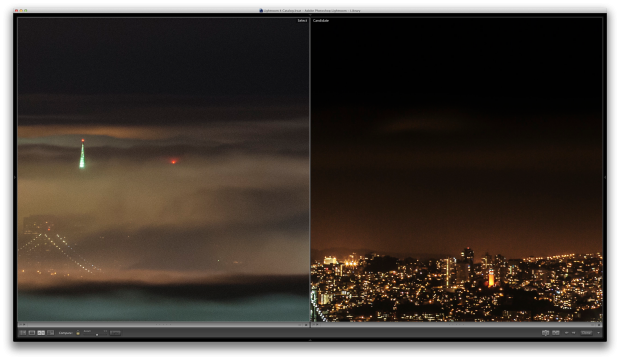
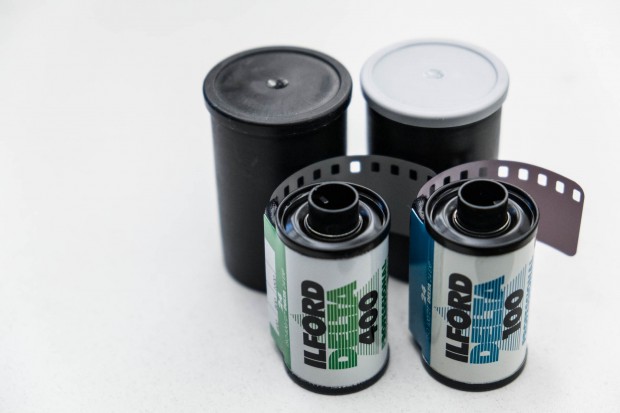
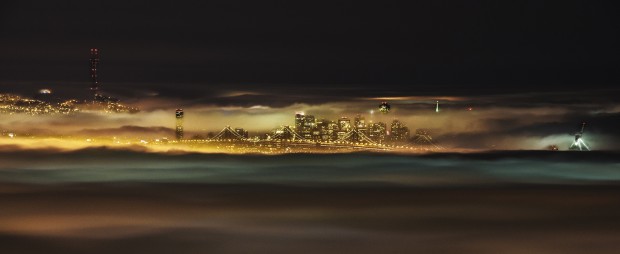


















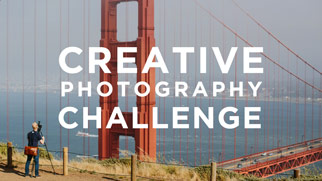
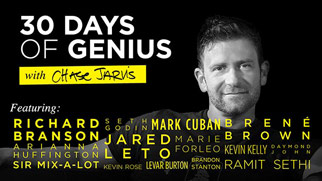
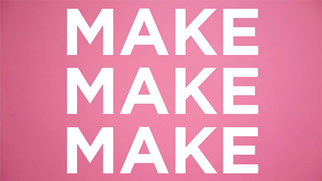
I love Ilford Delta 100 and 400. I’ve been using them for about 15 years now. The difference now from then is that instead of spending hours in a darkroom, I send off the film and get a high quality scan, creating a digital file.
I really like my Pentax K-30 and Samsung NX210, but if I had access to more money, I’d buy the D800E. If money was no object, I would shoot film exclusively. The cost of film and development adds up fast. With digital, the money is paid up front and there is no additional cost for each frame.
Sohali,
The point is most of these comparisons are ludicrous especially once you start introducing post production effects. In reality almost every photographer I know that makes a living from creating images does a good amount of post production to achieve that specific look unique for them (except for reportage perhaps).
Just look at the work of Budi (http://www.500px.com/ccline/) . You wouldn’t think he uses a 400D and an outdated version of Photoshop to achieve those results.
Tom, I totally get that you could, given enough time and Photoshop skills, achieve some impressive results. Yet can you honestly dispute that having a great starting point would, at the very least, reduce the time you spend on your computer? This is pretty-much my closing argument: “In the end, you’re going to make the image, not your camera. But it helps to have a great starting point.”
More importantly, arguing over this really does miss the point, which is that sensors _are_ starting to differentiate themselves in ways other than megapixel count, and that you can use that differentiation to your advantage. You can argue the point that with enough time and post-processing tools, you can achieve the look you’re seeking, but I’d much rather just have that output 90% there right out of camera and have to do minimal work to get it that last 10%.
Tom, thanks for your clear passion on the subject.
Putting aside the fact that it’s pretty obvious what RAW converter I used (that _is_ a Lightroom screenshot up there) and the fact that the effects package was used only on the finished image shown, not on the image comparison at the top or on the 100% crops, you might have asked “Hey, what settings did you use?” instead of jumping to the conclusion that there is some insidious skullduggery at play here.
Let me address your point of contention. The images above? The D800 was shot at ISO 800. The 5D Mark III image was taken at ISO 100. The night was crystal-clear when I took the shot with the 5D, whereas it was foggy and hazy when I captured the shot with the D800. Consistent experience with both cameras has rendered similar results time after time. And the heck of it is, you don’t have to take my word for it; reports of shadow noise and banding at low ISOs in the 5D Mark III abound on the internet.
But even that’s beside the point. The Nikon vs. Canon comparison was made not because I felt that one was quantifiably better than the other, but rather because it served as a good lead-in to the whole point of the article: that, like the different “looks” you got by using different types of film back in the day, sensors too are starting to differentiate from each other in the way they capture images. I went Nikon because I preferred the look of the D800E’s sensor. When I shoot fast-action (like birds in flight), on the other hand, I much prefer the Canon 1Dx over the D4, hands-down.
Are you going to ask how much Canon’s paying me now? Hint — I don’t get paid by any camera company. Also, for the record, Chase uses both Canon and Nikon, in addition to myriad other camera brands (Olympus, Fuji, RED, and Sony to name a few) and is not currently endorsing any camera in order to keep his creative options 100% open to the best tools on the market. He works with BorrowLenses.com in order to facilitate this vision of having the best tools for the job, regardless of brand. Those are the facts, my friend.
It’s one thing to ask questions; it’s another thing entirely to engage in ad hominem attacks because you didn’t like what you read.
so let me get this straight. You shoot two totally different scenes, on two different nights, make no statement in regards to the way the images were shot (RAW, what RAW converter was used, ISO, exposure settings) or what lenses were used, then you use an effects package to throw a filter on top of one image but not the other. Finally you say one camera is better than the other?
How do you draw that conclusion? Or should I say, how much did you or Chase get paid by Nikon to post this rubbish. I realise Chase is a brand ambassador for Nikon and probably gets the odd kick back but seriously if have to make these type of grand statements at least back them up with some proper scientific side by side comparisons.
In any final analysis, the viewer is only interested in the meaning the picture conveys. If there is a blemish, the eye is drawn to it so ‘exposing’ the quality of the recording medium. In previous times, improvements were manifested in the emulsions themselves and the cameras themselves were unchanged. Now improvements manifest in costly camera replacements posing a question…..